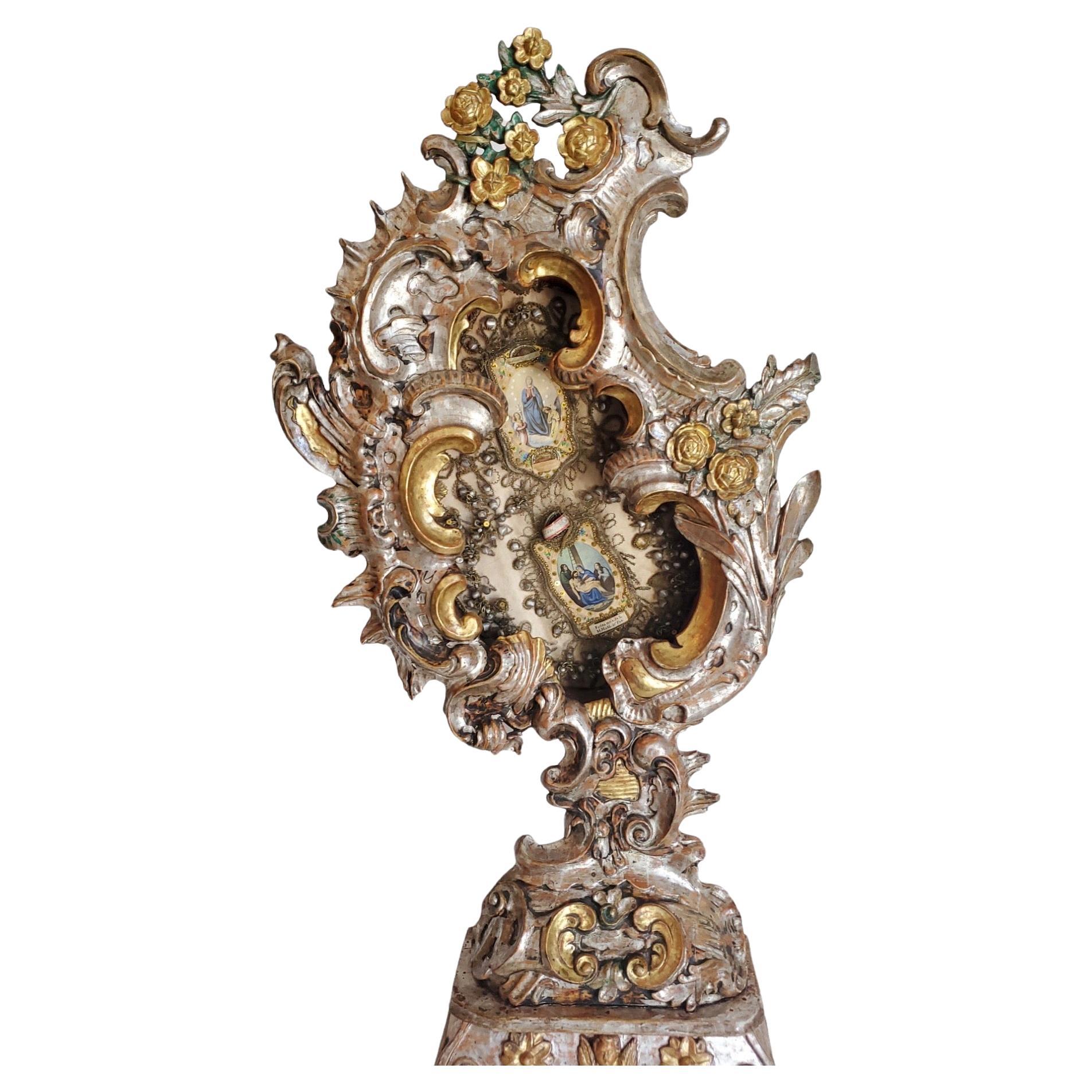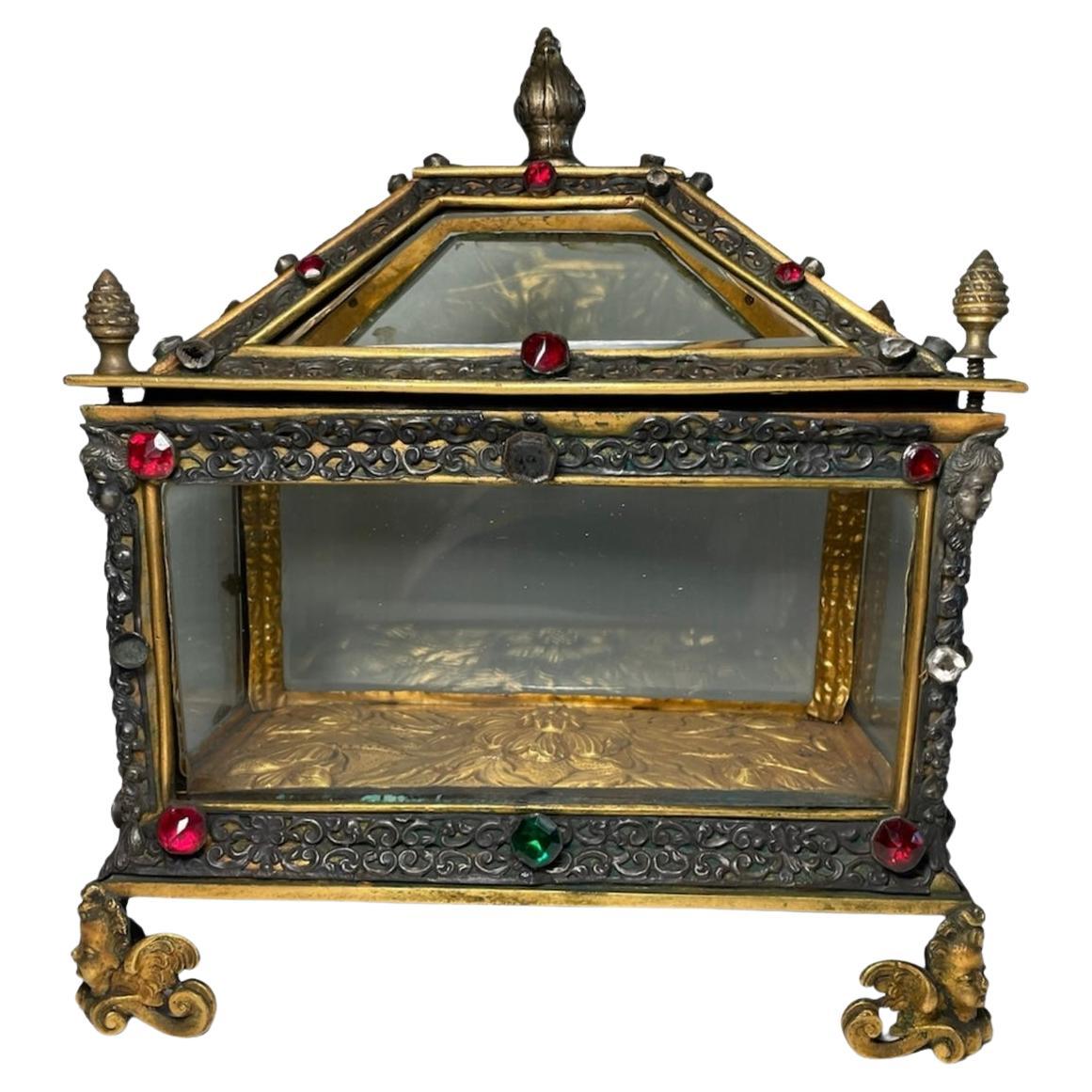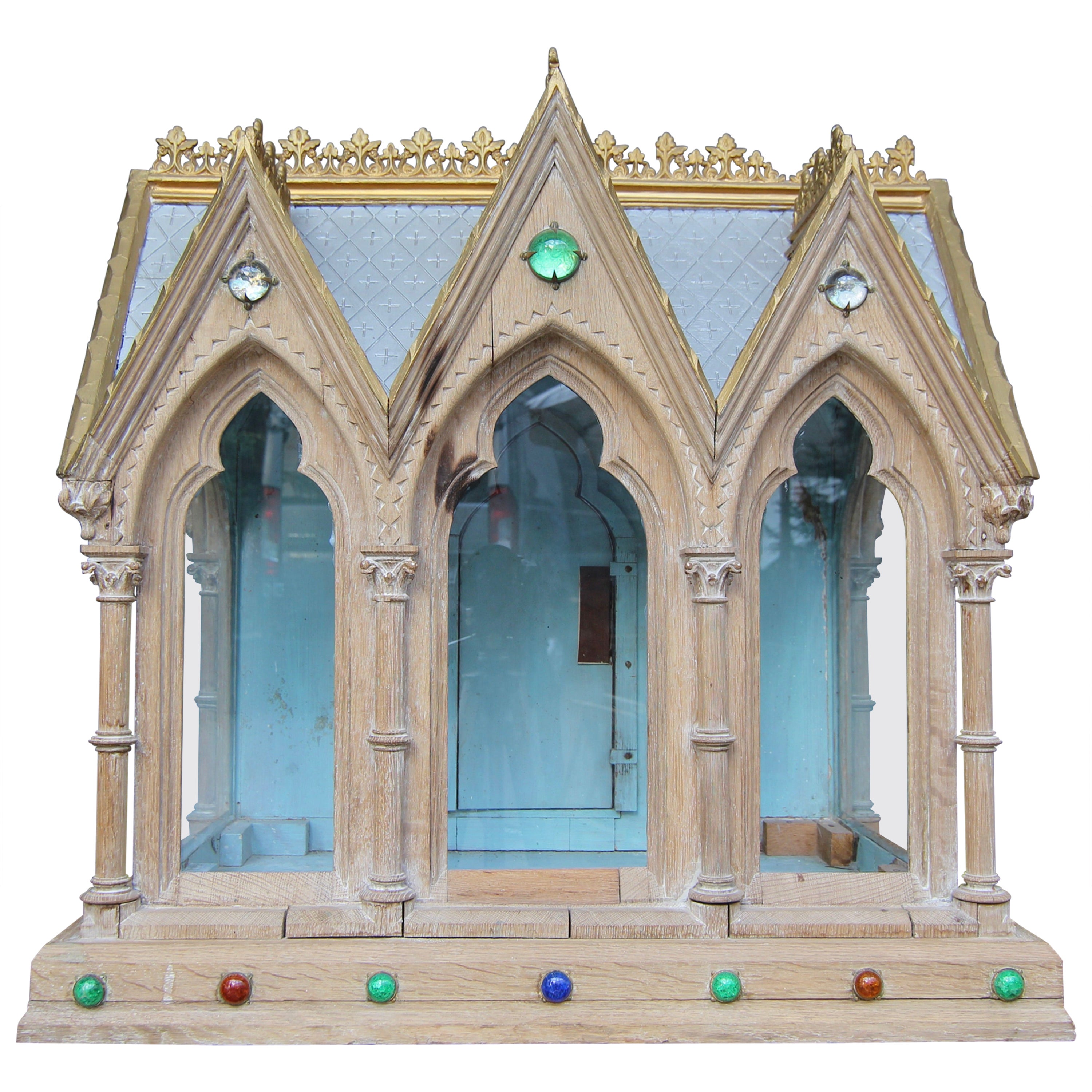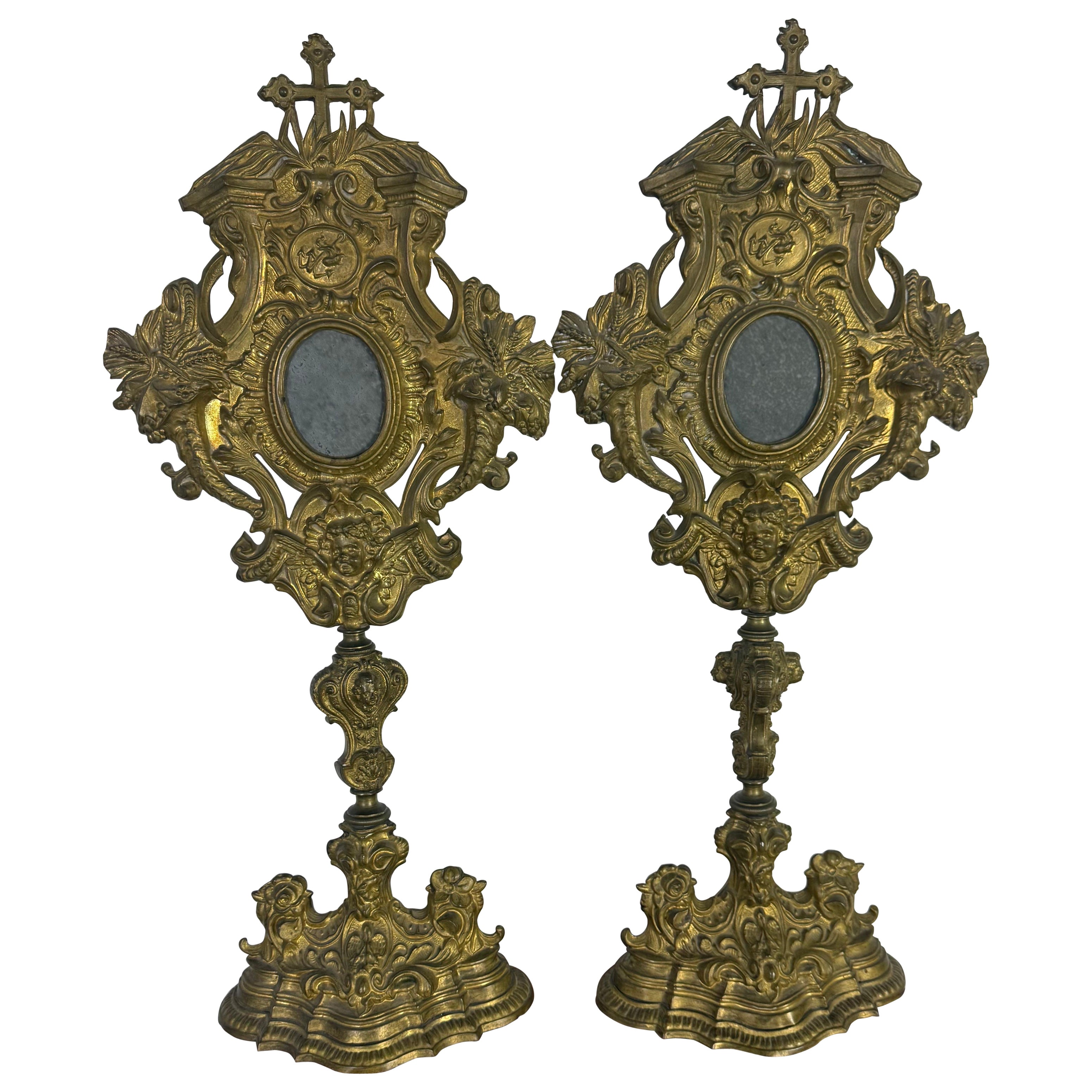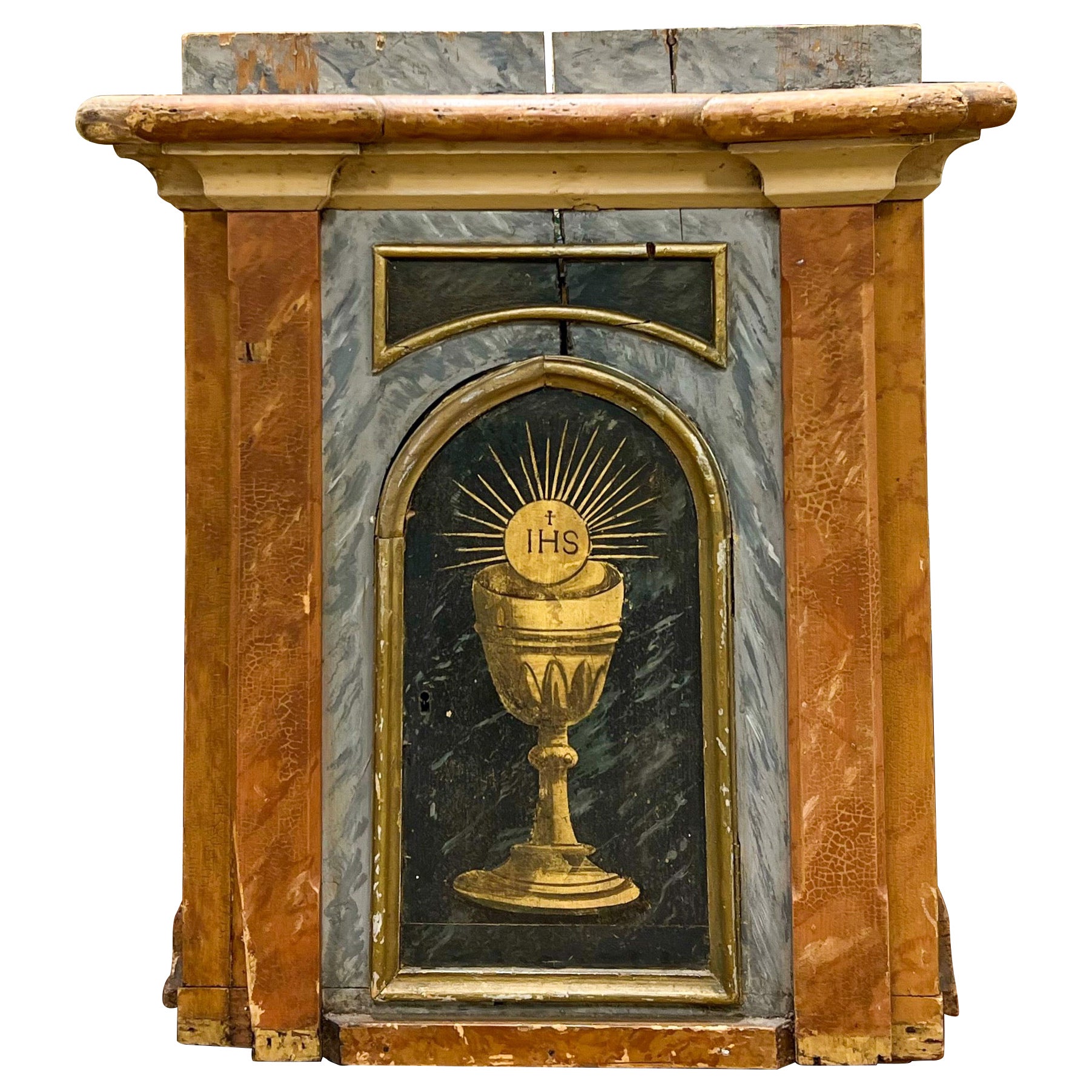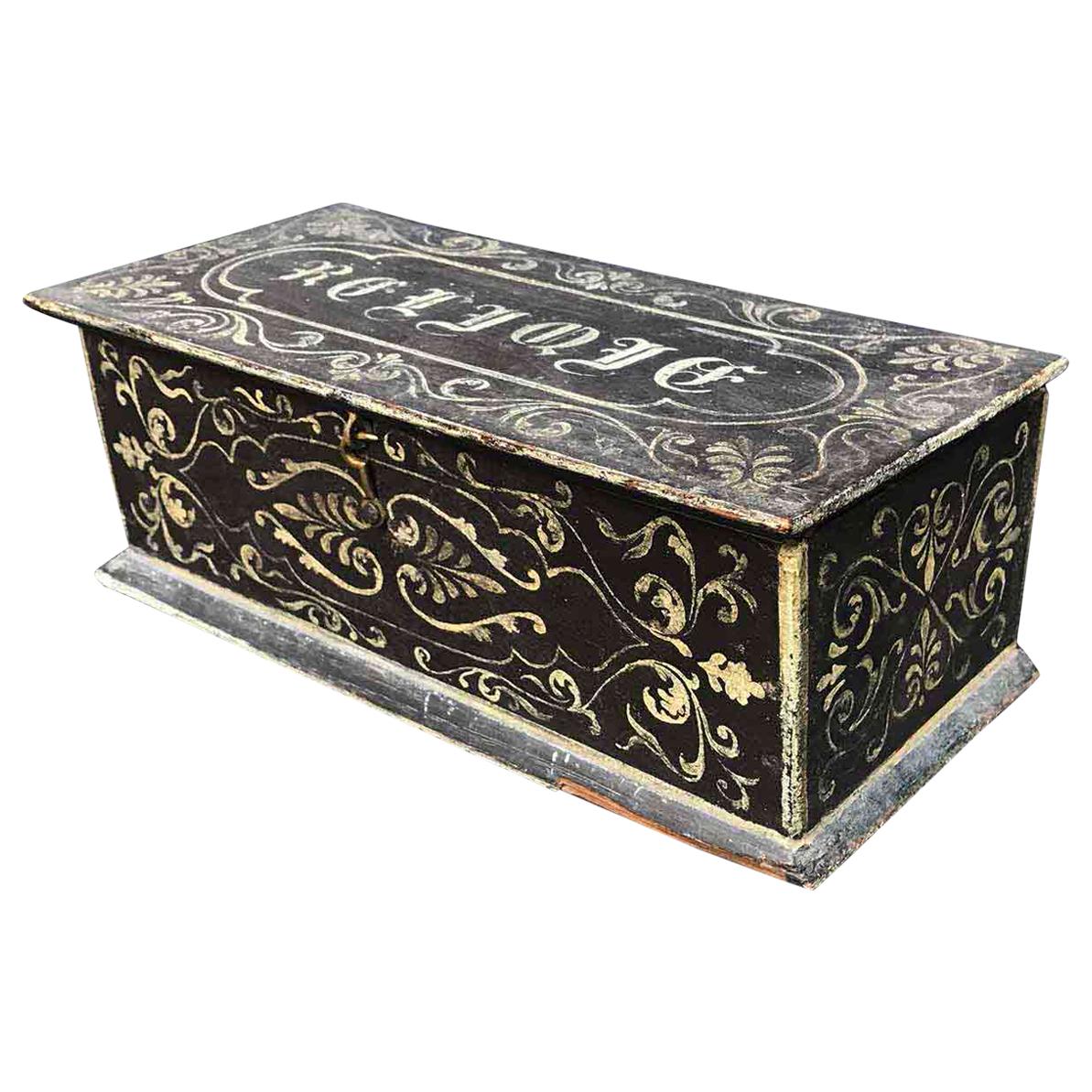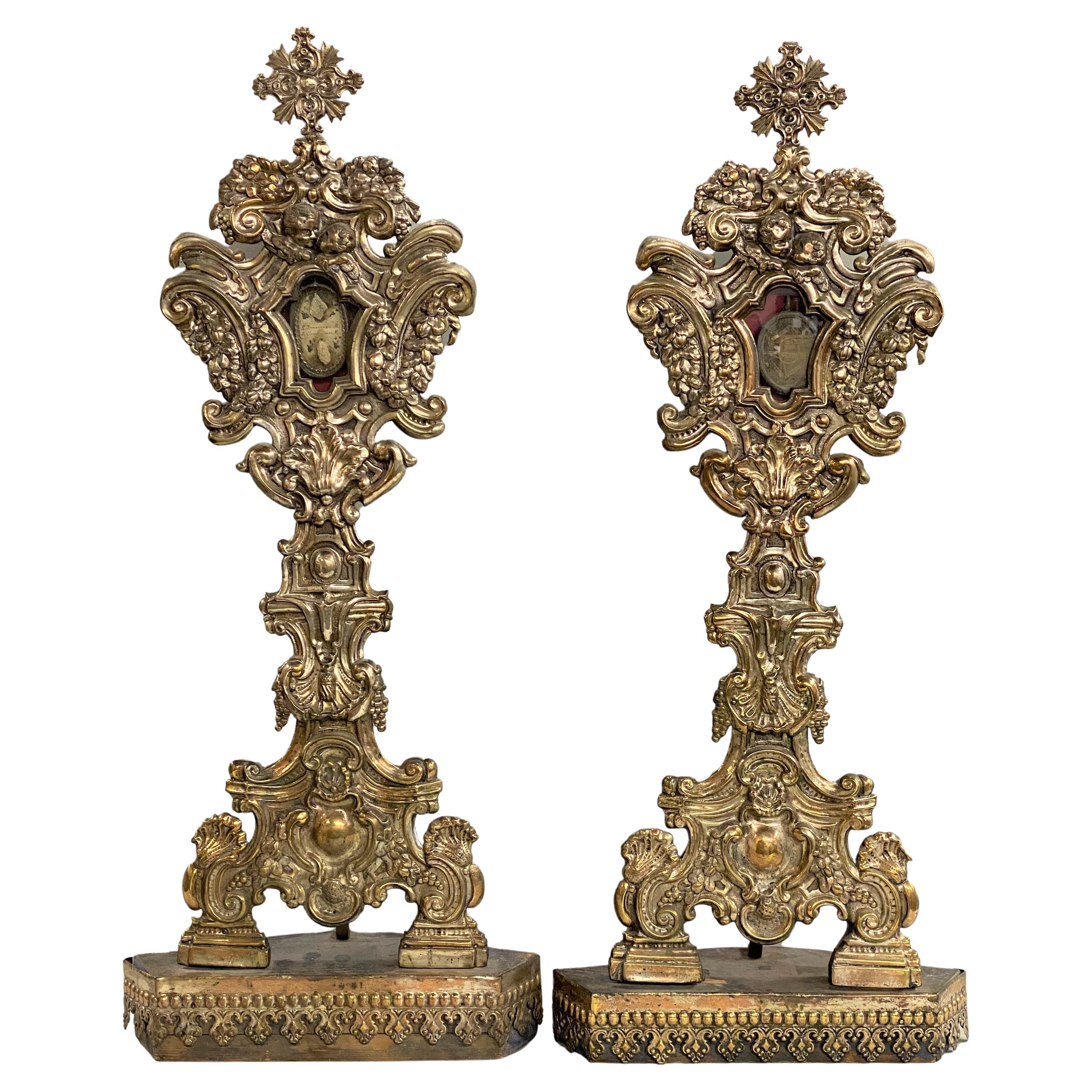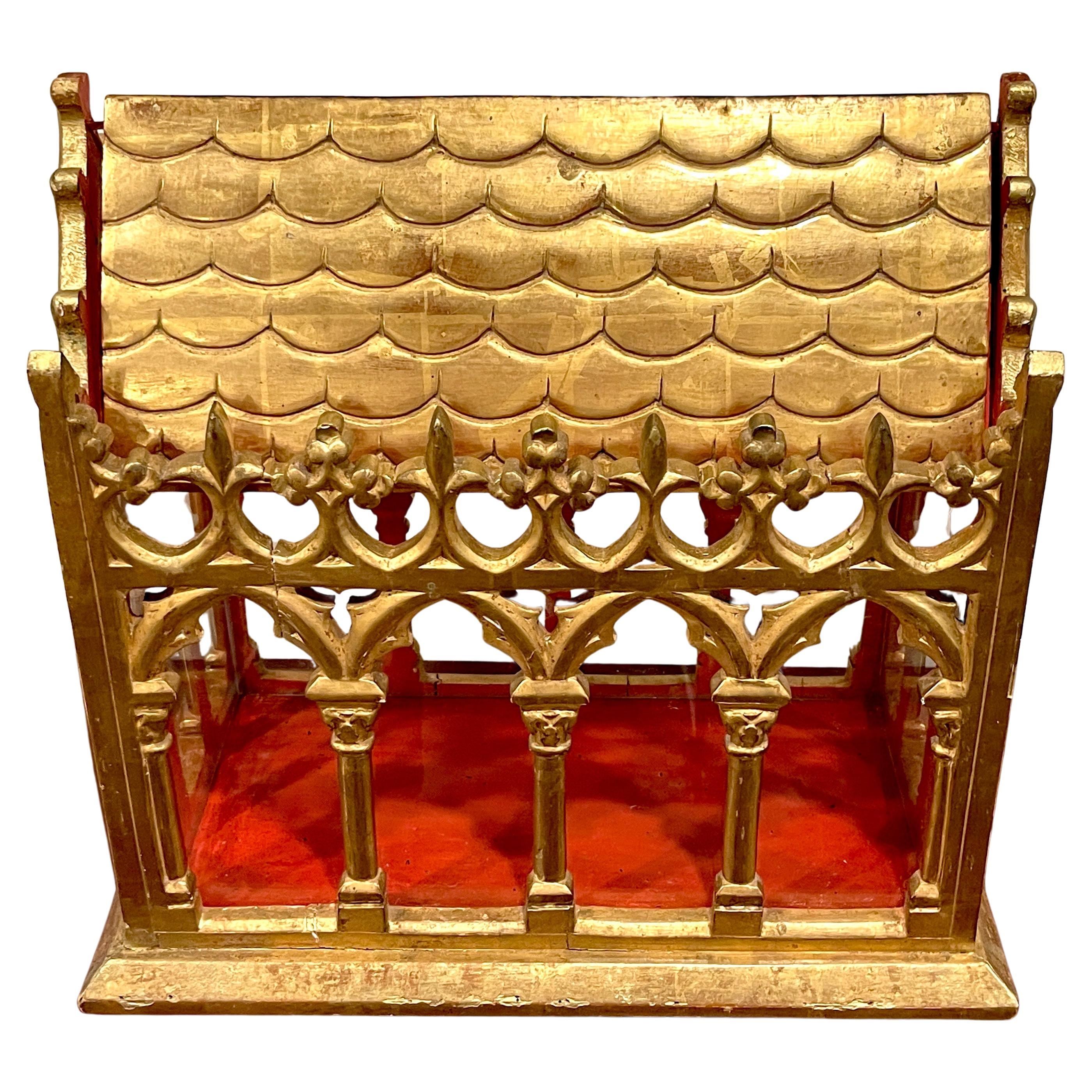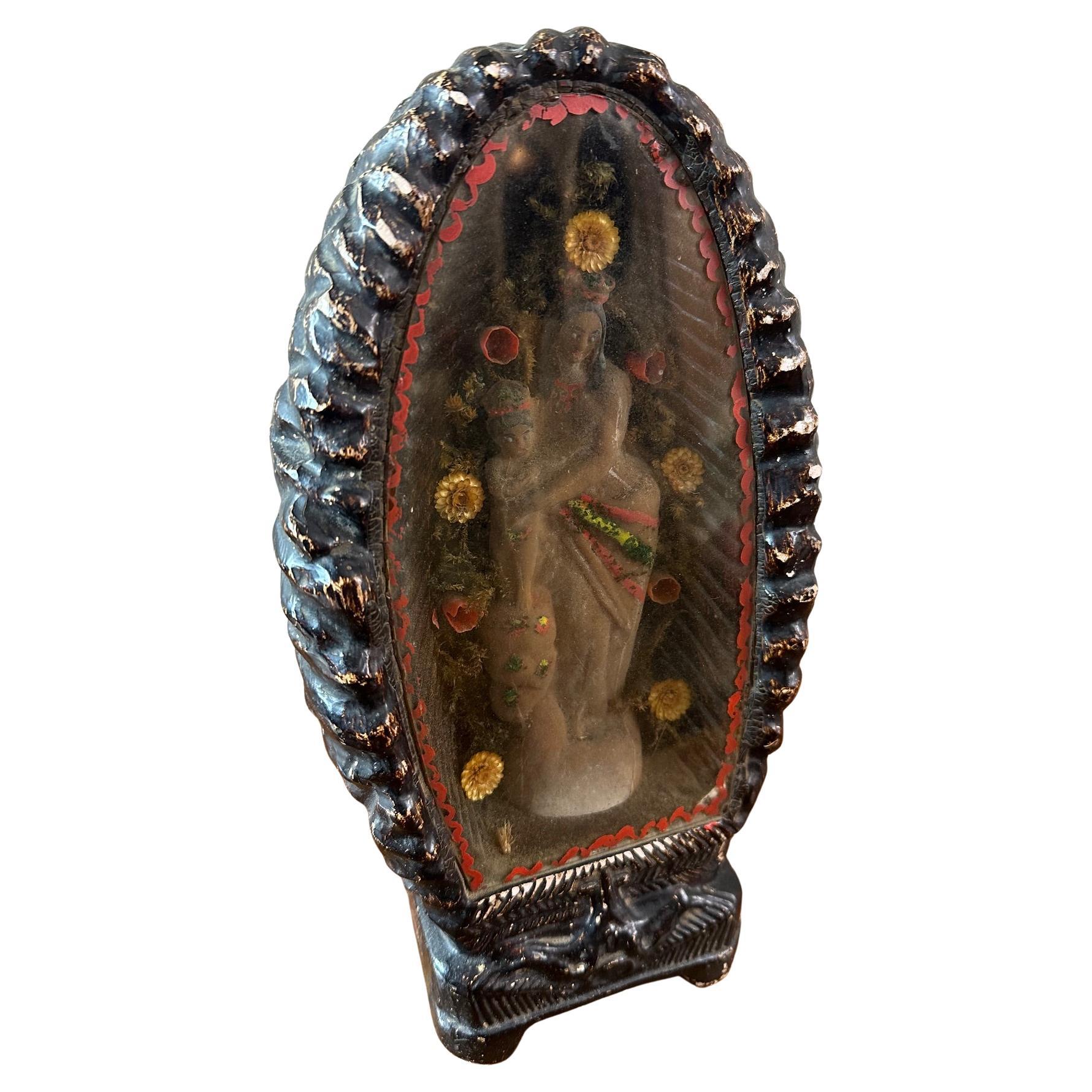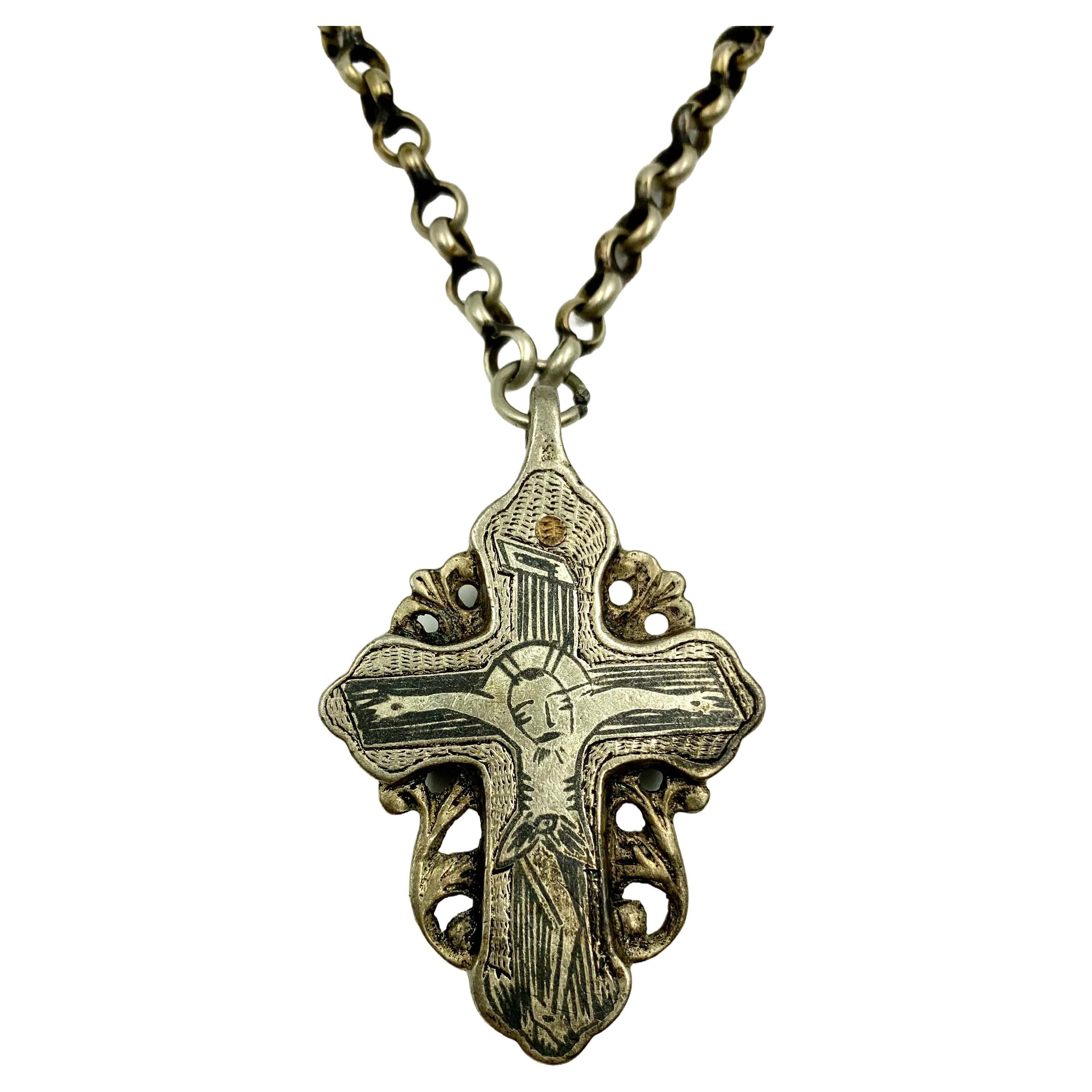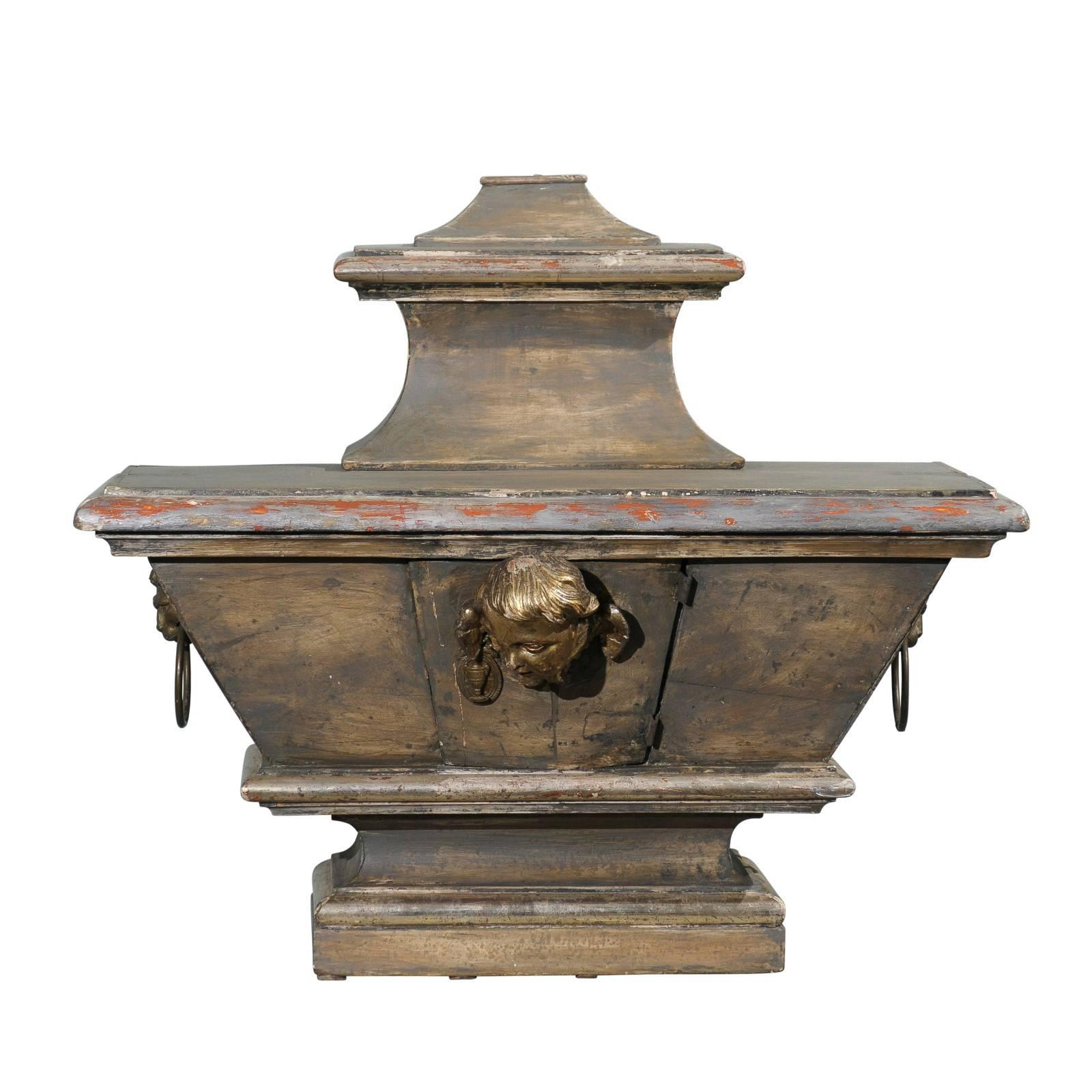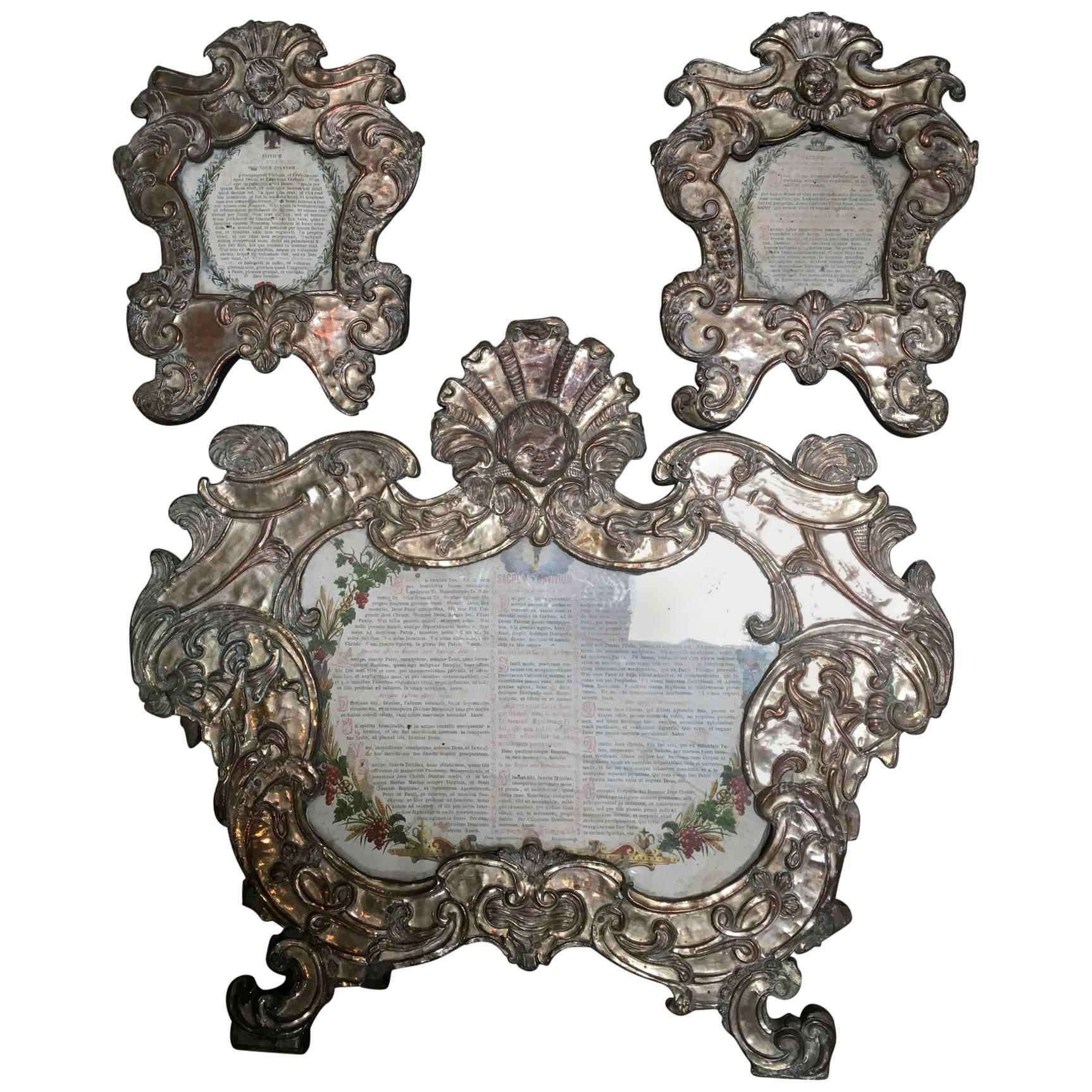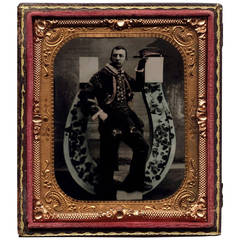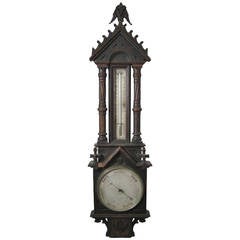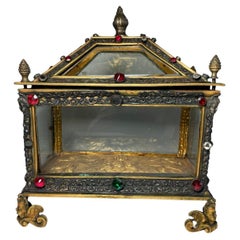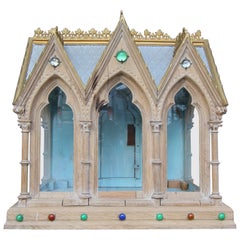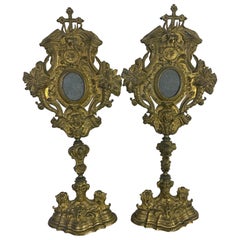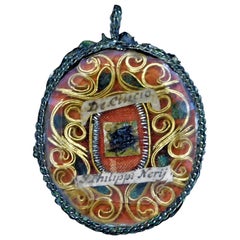
19th Century, Reliquary Saints Relics
View Similar Items
Want more images or videos?
Request additional images or videos from the seller
1 of 9
19th Century, Reliquary Saints Relics
About the Item
- Dimensions:Height: 0.25 in (6.35 mm)Width: 1.5 in (3.81 cm)Depth: 2 in (5.08 cm)
- Style:Victorian (Of the Period)
- Materials and Techniques:
- Period:
- Date of Manufacture:1860
- Condition:Wear consistent with age and use.
- Seller Location:Hamilton, CA
- Reference Number:1stDibs: LU1355228262912
About the Seller
5.0
Platinum Seller
Premium sellers with a 4.7+ rating and 24-hour response times
Established in 2010
1stDibs seller since 2015
1,316 sales on 1stDibs
Typical response time: 1 hour
Authenticity Guarantee
In the unlikely event there’s an issue with an item’s authenticity, contact us within 1 year for a full refund. DetailsMoney-Back Guarantee
If your item is not as described, is damaged in transit, or does not arrive, contact us within 7 days for a full refund. Details24-Hour Cancellation
You have a 24-hour grace period in which to reconsider your purchase, with no questions asked.Vetted Professional Sellers
Our world-class sellers must adhere to strict standards for service and quality, maintaining the integrity of our listings.Price-Match Guarantee
If you find that a seller listed the same item for a lower price elsewhere, we’ll match it.Trusted Global Delivery
Our best-in-class carrier network provides specialized shipping options worldwide, including custom delivery.More From This Seller
View All19th Century African Shona Dagger
Located in Hamilton, Ontario
19th Century dagger from the Shona people of Zimbabwe. It features beautiful carvings, a rich aged patina and a handmade steeped blade.
Category
Antique 1890s Zimbabwean Arms, Armor and Weapons
Materials
Metal
19th Century Horse Racing Jockey Tintype Photograph
Located in Hamilton, Ontario
19th century horse racing Jockey Tintype photograph.
Six plate tinted tintype of Canadian Jockey Ben Alcott, winner of the 1861 Canadian "Q...
Category
Antique 19th Century Canadian Sports Equipment and Memorabilia
$2,195 Sale Price
21% Off
Negretti and Zambra Aneroid Barometer, 19th Century
Located in Hamilton, Ontario
19th century Negretti & Zambra aneroid barometer.
Large English oak, Gothic style barometer.
Free shipping within the United States and Canada.
Category
Antique 19th Century Great Britain (UK) Gothic Scientific Instruments
$1,995 Sale Price
20% Off
19th Century Austrian Meerschaum and Silver Carved Pipe
Located in Hamilton, Ontario
Austrian silver mounted meerschaum carved pipe, circa 1890. Note, missing stem.
Category
Antique Late 19th Century Austrian Tobacco Accessories
Materials
Silver
19th Century Cast Iron Military Wall Plaque Sculpture of German Officer
Located in Hamilton, Ontario
19th century cast iron military wall plaque sculpture of German officer.
Category
Antique 19th Century German Wall-mounted Sculptures
Materials
Iron
$1,150 Sale Price
37% Off
19th Century, Irish Marine Botany Specimens Made for the Niagara Falls Museum
Located in Hamilton, Ontario
19th century Irish Marine Botany Specimens made for Thomas Barnett of the Niagara Falls Museum. Seaweed samples were collected off the West Coast of Ireland in 1871 by Mrs. Maria J.W. Kirkwood and presented to Thomas Barnett Esquire, proprietor of the Niagara Falls Museum. These come as two separately framed pieces with hand embroidered lettering surrounded by seaweed and a poem written by Victoria Hall.
Free shipping within the United States and Canada.
The Niagara Falls Museum was a museum most notable for being the oldest Canadian museum (1827), as well as for having housed the mummy of Ramesses I for 140 years before its return to Egypt in 2003. It was founded by Thomas Barnett of Birmingham, England and underwent a few vocational changes in its history.
More on Thomas Barnett and the Niagara Falls Museum.
Thomas Barnett was born on December the 4th, 1799 near Birmingham, England. He moved to Canada in the early 1820s and opened the Niagara Falls Museum in 1827 at the base of the Canadian Horseshoe Falls. Barnett had a passion for collecting oddities. He retrofitted a former brewery house to exhibit his private collection. Although Barnett was aware of the collection patterns of his North American contemporaries, his own approach bore an uncanny similarity to the British tradition, such as the Ashmolean Museum in Oxford, the first traditional museum in Britain.
The Niagara Falls Museum had humble beginnings. In 1827, the first museum contained Thomas Barnett's own cabinet of taxidermic curiosities. Although the details were not documented, the collection was likely composed of a number of mounted animals of local origin, combined with a smattering of Native American artifacts. Barnett's collection however rapidly grew. Prior to 1844, an account of the museum's contents stated that there were over 5000 items, including bipeds, quadrupeds, birds, fish, insects, reptiles, shells, minerals, and Native American curiosities. Through the first fifty years of its existence, the Niagara Falls Museum continued to acquire similar artifacts through the diligent efforts of the Barnett family and their associates.
In 1854, Sydney Barnett (son of Thomas Barnett) made the first of his three trips to Egypt (two by himself and one with Dr. J. Douglas of Montreal) and purchased four mummies as well as a host of other Egyptian antiquities. In 1857, mastodon remains were discovered in St. Thomas, Ontario and later placed in the museum. In 1859 an inventory of the museum's contents included, in addition to the previously mentioned artifacts, an egg collection...
Category
Antique 19th Century Decorative Art
$3,250 Sale Price / set
27% Off
You May Also Like
19th Century Carved Giltwood Reliquary
Located in Los Angeles, CA
Finely carved and detailed with a mix of silver and gold leaf together. Overall width is 18.5" Dated and signed on back side.
Category
Antique 19th Century Austrian Neoclassical Religious Items
Materials
Giltwood
19th Century Bronze Reliquary Casket
Located in Guaynabo, PR
This is a Bronze Reliquary Casket. It depicts a rectangular lidded casket/box shaped as a house with a hip roof and its walls are glasses framed wit...
Category
Antique 19th Century Unknown Renaissance Religious Items
Materials
Bronze
Late 19th Century Gothic Revival Reliquary Casket
Located in Dusseldorf, DE
A Gothic Revival reliquary. Circa late 19th / early 20th century. Made of solid oak with fine carving.
Reliquaries have been used to store relics since the Middle Ages. In sacred architecture they are often located behind the main altar in the chancel. In addition to classical, often church-like caskets, anthropomorphic, so-called "speaking" reliquaries were also made, which already inform the viewer about their contents through their own design. Mostly they were made of precious metals and decorated with rich sculptural ornaments or precious stones. One of the most famous examples of reliquaries is the Epiphany shrine of Nicholas of Verdun from the late 12th or early 13th century in Cologne Cathedral.
The reliquary offered here has an architectural structure with a rectangular ground plan. The three-sided glazed box with a dormer roof rests on a plinth.
A total of 8 columns of Corinthian order form the arcades which are crowned on both long sides by 3 lancets each and enclose the lancet windows...
Category
Antique Late 19th Century German Gothic Revival Religious Items
Materials
Glass, Oak
Pair of 19th C. Italian Reliquaries
Located in Los Angeles, CA
19th century pair of ornate gilded relicquaries made of brass with a gilt finish.
The feature highly decorative Baroque or Rococo-style detailing, including intricate scrollwork, f...
Category
Antique 19th Century Italian Baroque Religious Items
Materials
Brass
$2,800 / set
Early 19th Century Rustic French Catholic Reliquary Box
Located in Kennesaw, GA
This is a very early French reliquary box used to hold personal articles such as a crucifix. The front door opens to reveal one wall in silk. The piece i...
Category
Antique Early 19th Century French Baroque Revival Religious Items
Materials
Wood
French Mid-19th Century Lacquered Oak Reliquary Box
Located in Milano, MI
French 19th century lacquered rectangular shaped reliquary box, realized in oak, decorated with a dark brown/grey lacquering and a white scrolling and pa...
Category
Antique Mid-19th Century French Decorative Boxes
Materials
Oak
Recently Viewed
View AllMore Ways To Browse
Church Monstrance
Font Shell
French Holy Water Font
Gothic Gilt Angels
Kathol Schulbibelwerk Von Dr Ecker
Ludwig Yehuda Wolpert
Marble Holy Water Font
Pantocrator Icon
Saint Dominic
Spanish Colonial Reliquary
Used Church Pulpit Furniture
19th Century Bible Box
19th Century Wooden Crucifix
Antique Yad
Ascension Of Christ
Bronze Jesus Plaque
Ecclesiastical Boxes
Hand Carved Jesus Plaque
